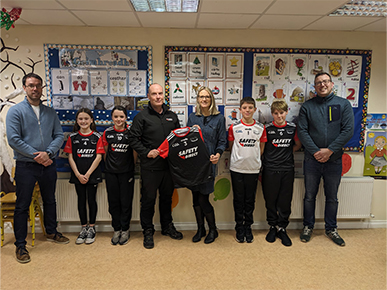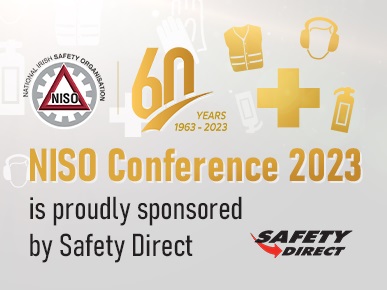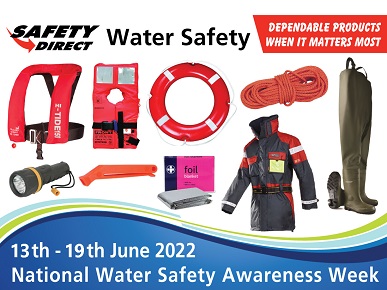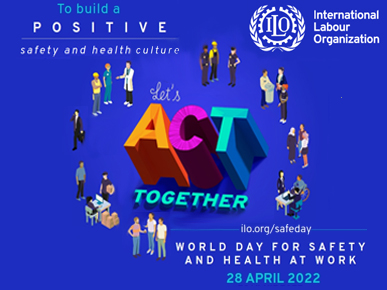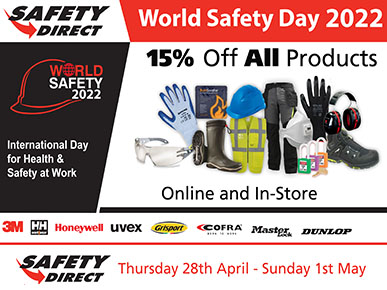National Road Safety Week 2021
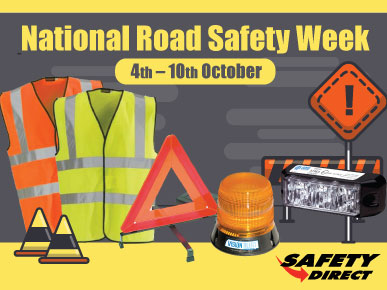
National Road Safety Week takes place from 4th - 10th October, with an aim to promote road safety and its importance for all road users. With 137 collisions taking place in 2020, understanding and practising Road Safety is crucial to protect everyone using Ireland's roads.
Drivers, cyclists and pedestrians should all take care when using the roads. Below are some important safety tips that should be practised by each road user:
Key Road Safety Tips for Drivers:
- Speed: Driving at too high of a speed severely reduces a driver's ability to steer safely around bends. Speeding also increases the distance necessary to stop a car, which can cause collisions. Drivers are reminded to 'Check the Signs - Check your Speed' and ensure they are complying with speed limits.
- Seat Belts: The proven lifesaver, seat belts should be used by all passengers on every car journey. Not wearing a seat belt incurs up to 4 penalty points. Crucially, without seatbelts 3 out of 4 passengers will be killed or seriously injured in a 50 km/h head-on collision.
- Correct Use of Lights: A well-lit vehicle will be clearly visible to other road users. Drivers need to ensure that they not only utilise the vehicle lights, but that they are used appropriately. If lights are incorrectly adjusted or damaged, they will limit the range of vision and could potentially dazzle oncoming traffic.
- Using Mobile Phones: It is illegal to hold a mobile phone in your hand or support it with another part of your body (e.g. between your head and shoulder) whilst driving. Using a mobile phone at the same time as driving makes it harder to judge safe gaps in traffic, maintain a good distance from the car in front and to drive at the correct speed. If using the phone is absolutely necessary, the driver should find a safe and legal place to park.
- Driver Tiredness: Driving whilst tired can result in severe road accidents, with tiredness-related collisions being 3 times more likely to result in death or serious injury. This is due to the high impact speed when a collision takes place. If a driver feels tired, they should find a suitable place to stop and take a break. Drinking a caffeinated drink and taking a short nap when stopped (to allow the caffeine to take effect) can provide a boost of energy.
- Driving under the Influence: Drivers should never use their car after consuming alcohol or drugs. Both substances severely affect judgement, vision, co-ordination and reaction time.
Key Road Safety Tips for Cyclists:
- Bike Size: Cyclists should ensure that their bike is the right size - either not too big or not too small. When sitting on the saddle, both feet should touch the ground. Cycling the incorrect size bike poses a risk of injury.
- Bike Quality and Service: Cyclists should keep their bike well maintained and fix anything that breaks. A functioning bell, well-oiled chain, correctly positioned lamps, and working brakes are just some of the key components of a bike.
- Head Protection: A cyclist should always wear a helmet, as it reduces the risk of head, neck and facial injuries by 33%. The helmet should fit the head well before any adjustments are made (e.g. do not buy a helmet for a child that they will "grow into", it should fit comfortably at time of purchase). The helmet should be "CE" marked and meet the EN 1078 safety standard.
- Be Seen: Cyclists should always wear high-visibility clothing - such as a vest or armband - to ensure that they are visible to other road users. This is especially important in autumn and winter months where daylight is limited.
- Use Signals and Obey the Rules of the Road: When cycling, always communicate with the drivers around you by using effective signals, before you start, stop or turn. Cyclists need to remember that they too must obey the Rules of the Road and should always cycle on the left hand side with the flow of traffic.
Key Road Safety Tips for Pedestrians:
- Stop, Look and Listen: Pedestrians should always be wary of their surroundings, and take care to notice any cars, cyclists or other road users.
- Footpaths: If there is a footpath, the pedestrian should utilise it. If there is not a footpath, pedestrians should use the right-hand side of the road, facing oncoming traffic. When walking on a road that has no footpath, it is important to keep as close to the side of the road as possible.
- Crossing Roads Safely: A pedestrian should try to avoid crossing the road between parked cars, in case one might suddenly move to take off. A pedestrian should always try, if possible, to cross at a pedestrian crossing or traffic lights, as these are a far safer option. Crucially, a pedestrian should never cross at a bend, as visibility is greatly impaired.
- Increase Visibility: A driver may not see a pedestrian at night, which can lead to collisions. Pedestrians should wear high visibility / reflective clothing, such as armbands or vests, to ensure they are visible to drivers. On country roads where there are no streetlights, a torch should also be carried.
Safety Direct provides a range of Vehicle / Road Safety, Hi-Vis Clothing and Lighting products from leading brands. Get 10% off selected products* at checkout using RSA10.
*Promotion does not apply to batteries, microscopes, magnifiers and inspection mirrors






